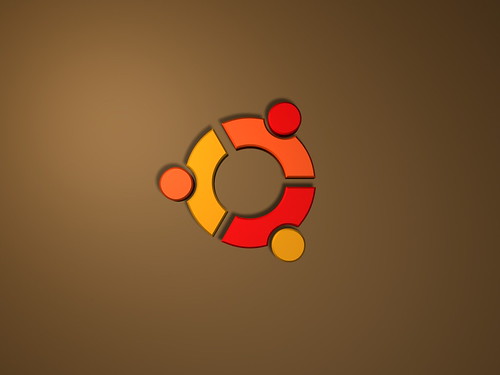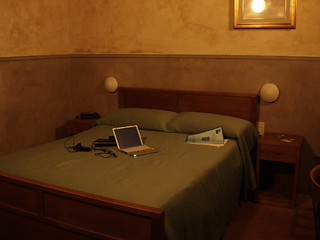But it goes. New year, 2013 is coming.
I wish to you, my readers, all the best!
Stay tuned to my blog, and I am sure you will get a lot of useful information here.
Merry Christmas!
Happy New Year!
See you in 2013!
How to choose an operating system for your computer and how to run it there.
| About DarkDuck DarkDuck is a person with whole life spent in IT area. It does not mean only Linux, but also SAP systems. Learn more about him here. |

| About DarkDuck DarkDuck is a person with whole life spent in IT area. It does not mean only Linux, but also SAP systems. Learn more about him here. |
 An operating system, also known simply as OS, comprises of a set of software applications that facilitate computer hardware resources and offers general services for computing applications. An OS plays an important role within the system software in an entire computer setup. Applications mostly need a compatible OS to work properly. We use them all the time, sometimes without realizing it, so lets explore the different types of Operating Systems and some of the most popular ones on the market.
An operating system, also known simply as OS, comprises of a set of software applications that facilitate computer hardware resources and offers general services for computing applications. An OS plays an important role within the system software in an entire computer setup. Applications mostly need a compatible OS to work properly. We use them all the time, sometimes without realizing it, so lets explore the different types of Operating Systems and some of the most popular ones on the market.| About DarkDuck DarkDuck is a person with whole life spent in IT area. It does not mean only Linux, but also SAP systems. Learn more about him here. |
UK (2.00 GBP):

|
| Fedora 18 pre-order (USA) |
|---|

| Fedora 18 pre-order (Other countries) |
|---|

| About DarkDuck DarkDuck is a person with whole life spent in IT area. It does not mean only Linux, but also SAP systems. Learn more about him here. |
 |
| Changing CPU affinity using Htop - example |
| About DarkDuck DarkDuck is a person with whole life spent in IT area. It does not mean only Linux, but also SAP systems. Learn more about him here. |
| About DarkDuck DarkDuck is a person with whole life spent in IT area. It does not mean only Linux, but also SAP systems. Learn more about him here. |
 Electronic waste is becoming a serious global problem. By the end of the 20th century, the United States Environmental Protection Agency (EPA) had already called attention to the heaps of computers, monitors, laptops, printers, scanners, keyboards, cell phones, and other consumer electronic devices rapidly piling up in landfills.
Electronic waste is becoming a serious global problem. By the end of the 20th century, the United States Environmental Protection Agency (EPA) had already called attention to the heaps of computers, monitors, laptops, printers, scanners, keyboards, cell phones, and other consumer electronic devices rapidly piling up in landfills.| About DarkDuck DarkDuck is a person with whole life spent in IT area. It does not mean only Linux, but also SAP systems. Learn more about him here. |
 Open source office products will include many of the features of costly programs and support all of the major file type, including Microsoft file types. The free suites will include the word processor, spreadsheet and presentation software that businesses need. Many also include other programs like drawing applications and database tools.
Open source office products will include many of the features of costly programs and support all of the major file type, including Microsoft file types. The free suites will include the word processor, spreadsheet and presentation software that businesses need. Many also include other programs like drawing applications and database tools.| About DarkDuck DarkDuck is a person with whole life spent in IT area. It does not mean only Linux, but also SAP systems. Learn more about him here. |
 If you answer is yes, then you're like me. I also have a company laptop with MS Windows already installed on it. To be honest, it is not a top-range laptop, although I cannot call it a low-range one either. Something average, or just below average.
If you answer is yes, then you're like me. I also have a company laptop with MS Windows already installed on it. To be honest, it is not a top-range laptop, although I cannot call it a low-range one either. Something average, or just below average. | About DarkDuck DarkDuck is a person with whole life spent in IT area. It does not mean only Linux, but also SAP systems. Learn more about him here. |
| About DarkDuck DarkDuck is a person with whole life spent in IT area. It does not mean only Linux, but also SAP systems. Learn more about him here. |
 |
| Ubuntu has always been the most popular Linux distribution |
 |
| The Ubuntu main screen is clear and confident - something that Linux distribution marketing has lacked |
| About DarkDuck DarkDuck is a person with whole life spent in IT area. It does not mean only Linux, but also SAP systems. Learn more about him here. |
| About DarkDuck DarkDuck is a person with whole life spent in IT area. It does not mean only Linux, but also SAP systems. Learn more about him here. |
| About DarkDuck DarkDuck is a person with whole life spent in IT area. It does not mean only Linux, but also SAP systems. Learn more about him here. |
| About DarkDuck DarkDuck is a person with whole life spent in IT area. It does not mean only Linux, but also SAP systems. Learn more about him here. |
| About DarkDuck DarkDuck is a person with whole life spent in IT area. It does not mean only Linux, but also SAP systems. Learn more about him here. |
| About DarkDuck DarkDuck is a person with whole life spent in IT area. It does not mean only Linux, but also SAP systems. Learn more about him here. |
| About DarkDuck DarkDuck is a person with whole life spent in IT area. It does not mean only Linux, but also SAP systems. Learn more about him here. |
| About DarkDuck DarkDuck is a person with whole life spent in IT area. It does not mean only Linux, but also SAP systems. Learn more about him here. |
| About DarkDuck DarkDuck is a person with whole life spent in IT area. It does not mean only Linux, but also SAP systems. Learn more about him here. |
| About DarkDuck DarkDuck is a person with whole life spent in IT area. It does not mean only Linux, but also SAP systems. Learn more about him here. |
| About DarkDuck DarkDuck is a person with whole life spent in IT area. It does not mean only Linux, but also SAP systems. Learn more about him here. |
| About DarkDuck DarkDuck is a person with whole life spent in IT area. It does not mean only Linux, but also SAP systems. Learn more about him here. |
| About DarkDuck DarkDuck is a person with whole life spent in IT area. It does not mean only Linux, but also SAP systems. Learn more about him here. |
UK (2.00 GBP):

|
| Ubuntu 12.10 pre-order (USA) |
|---|

| Ubuntu 12.10 pre-order (Other countries) |
|---|

| About DarkDuck DarkDuck is a person with whole life spent in IT area. It does not mean only Linux, but also SAP systems. Learn more about him here. |
| About DarkDuck DarkDuck is a person with whole life spent in IT area. It does not mean only Linux, but also SAP systems. Learn more about him here. |
| About DarkDuck DarkDuck is a person with whole life spent in IT area. It does not mean only Linux, but also SAP systems. Learn more about him here. |
 |
| Image of Dariolynx |
| About DarkDuck DarkDuck is a person with whole life spent in IT area. It does not mean only Linux, but also SAP systems. Learn more about him here. |
| About DarkDuck DarkDuck is a person with whole life spent in IT area. It does not mean only Linux, but also SAP systems. Learn more about him here. |
| About DarkDuck DarkDuck is a person with whole life spent in IT area. It does not mean only Linux, but also SAP systems. Learn more about him here. |
| About DarkDuck DarkDuck is a person with whole life spent in IT area. It does not mean only Linux, but also SAP systems. Learn more about him here. |
| About DarkDuck DarkDuck is a person with whole life spent in IT area. It does not mean only Linux, but also SAP systems. Learn more about him here. |
| About DarkDuck DarkDuck is a person with whole life spent in IT area. It does not mean only Linux, but also SAP systems. Learn more about him here. |
 |
| This is my Light-Weight Distro |
| About DarkDuck DarkDuck is a person with whole life spent in IT area. It does not mean only Linux, but also SAP systems. Learn more about him here. |
| About DarkDuck DarkDuck is a person with whole life spent in IT area. It does not mean only Linux, but also SAP systems. Learn more about him here. |
 |
| Image by slgckgc |
| About DarkDuck DarkDuck is a person with whole life spent in IT area. It does not mean only Linux, but also SAP systems. Learn more about him here. |
| About DarkDuck DarkDuck is a person with whole life spent in IT area. It does not mean only Linux, but also SAP systems. Learn more about him here. |
 Of course, Edubuntu is not the only distribution with the purpose of helping people to teach and learn. Another example in this area is Zorin OS Educational.
Of course, Edubuntu is not the only distribution with the purpose of helping people to teach and learn. Another example in this area is Zorin OS Educational. | About DarkDuck DarkDuck is a person with whole life spent in IT area. It does not mean only Linux, but also SAP systems. Learn more about him here. |
UK (2.00 GBP):
 | USA (6.50 USD):
 | ||||
Other countries (4.50 GBP):
 | |||||
| About DarkDuck DarkDuck is a person with whole life spent in IT area. It does not mean only Linux, but also SAP systems. Learn more about him here. |
| About DarkDuck DarkDuck is a person with whole life spent in IT area. It does not mean only Linux, but also SAP systems. Learn more about him here. |
| About DarkDuck DarkDuck is a person with whole life spent in IT area. It does not mean only Linux, but also SAP systems. Learn more about him here. |
| About DarkDuck DarkDuck is a person with whole life spent in IT area. It does not mean only Linux, but also SAP systems. Learn more about him here. |
| About DarkDuck DarkDuck is a person with whole life spent in IT area. It does not mean only Linux, but also SAP systems. Learn more about him here. |
| About DarkDuck DarkDuck is a person with whole life spent in IT area. It does not mean only Linux, but also SAP systems. Learn more about him here. |
| About DarkDuck DarkDuck is a person with whole life spent in IT area. It does not mean only Linux, but also SAP systems. Learn more about him here. |
| About DarkDuck DarkDuck is a person with whole life spent in IT area. It does not mean only Linux, but also SAP systems. Learn more about him here. |
| About DarkDuck DarkDuck is a person with whole life spent in IT area. It does not mean only Linux, but also SAP systems. Learn more about him here. |
| About DarkDuck DarkDuck is a person with whole life spent in IT area. It does not mean only Linux, but also SAP systems. Learn more about him here. |
| About DarkDuck DarkDuck is a person with whole life spent in IT area. It does not mean only Linux, but also SAP systems. Learn more about him here. |
 |
| 1 000 000 |
| About DarkDuck DarkDuck is a person with whole life spent in IT area. It does not mean only Linux, but also SAP systems. Learn more about him here. |
| About DarkDuck DarkDuck is a person with whole life spent in IT area. It does not mean only Linux, but also SAP systems. Learn more about him here. |
| About DarkDuck DarkDuck is a person with whole life spent in IT area. It does not mean only Linux, but also SAP systems. Learn more about him here. |
| About DarkDuck DarkDuck is a person with whole life spent in IT area. It does not mean only Linux, but also SAP systems. Learn more about him here. |
| About DarkDuck DarkDuck is a person with whole life spent in IT area. It does not mean only Linux, but also SAP systems. Learn more about him here. |
| About DarkDuck DarkDuck is a person with whole life spent in IT area. It does not mean only Linux, but also SAP systems. Learn more about him here. |
| About DarkDuck DarkDuck is a person with whole life spent in IT area. It does not mean only Linux, but also SAP systems. Learn more about him here. |